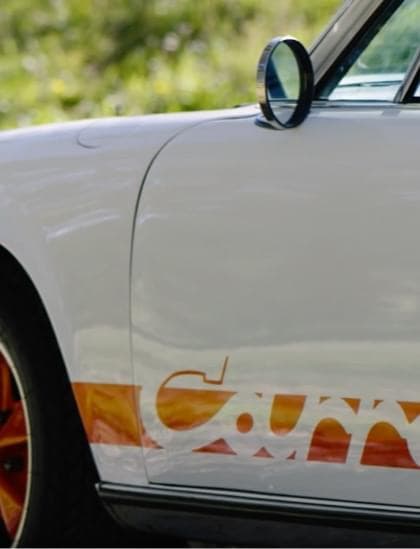The term “over-thinking it” might have been coined by someone who has listened to me talk about cars. I can’t help it, there’s so much there to think about when you’re confronted by a car – especially one of the really lusted-after, or exotic important things, like for example, the Countach.
You can’t have been born in the seventies and grown up in the eighties and not know what it is right?
All wedge and angle, and then wing and flare; the Countach was Hip Hop to Rock n’ Roll. Schoolboy dream stuff, the preserve of the wealthy and outlandish (and I didn’t separate those terms for a reason). The Countach defined a genre, and there aren’t many cars that anyone can say that of. Its older brother the Miura might’ve technically qualified as the ‘world’s first supercar’, but that’s a benign term to most because it assumes that the person hearing the phrase can associate the mechanicals and their output with relative, contemporary cars, but with the Countach – anyone with the sense of sight can tell you that nothing quite as bonkers had ever been produced in volumes greater than one.
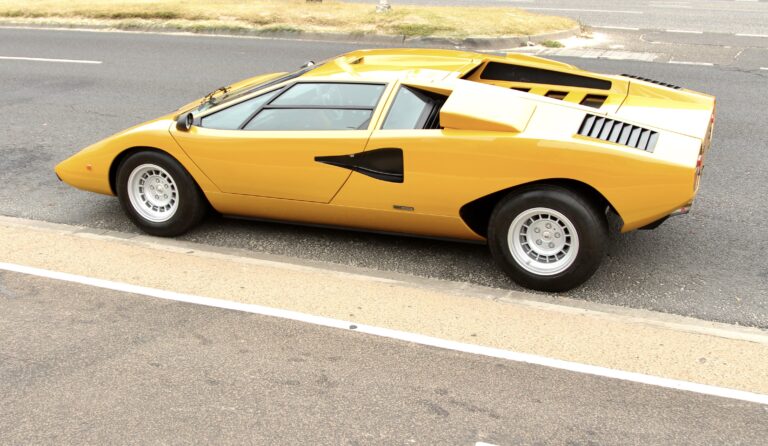
So then, that is why everyone looks at me like I’ve just arrived from Mars when I casually drop into a conversation on the subject that I am not a fan. It’s like that commercial when the fella in the pub tells his mate that he doesn’t really like beer, and all the punters in the place go silent. You know the one.
I was a child who knelt at Enzo’s altar. Racing was what made cars special, and why the hell would anyone go out and buy a ‘supercar’ that looked like something from a science fiction film and had no racing pedigree? So upon learning a few days prior that I would have an opportunity rarely bestowed on many an enthusiast to spend a day in a Countach, I knew there would be but one way to approach it – I’d have to do it Dave’s way.
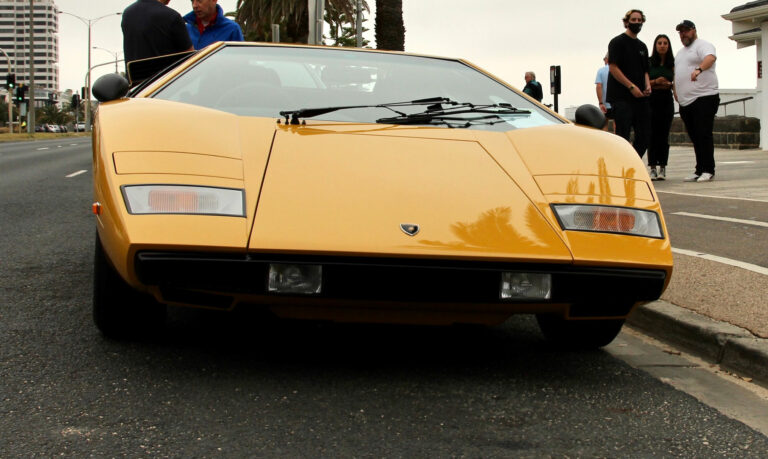
Dave’s way is good, but it means that as a history-loving romanticist who imagines that he might’ve actually been there when some of the great pens hit the great drawing boards and concocted the art and design masterpieces that have become the cars of legend, I can be somewhat left wanting. Nevertheless, I approached it like this; In my mind I deleted the crest on the nose, the badges on the back and the bulls on the steering wheel boss and the gear lever and I drove the car as if it were an assembly of mechanical parts, put together to achieve an outcome and, against my own genetic constitution to make an assessment of a car by comparing it to something else, I just rode as a passenger and drove it myself as if I might’ve been a journalist in its period.
Well, wouldn’t you know it..? It was fun.
Not ‘fun’ like you have when you guiltily drive your MG Midget to work with the roof off no, I mean it was really hard work and very hot in the cabin, its gear change had a heft that required real muscular input. The pedal box was as expected – narrowly assembled down in a black hole, and the visibility out of the car in any direction other than forward was questionable for a vehicle of any description. It felt like a racing car – and that my friends, is fun.
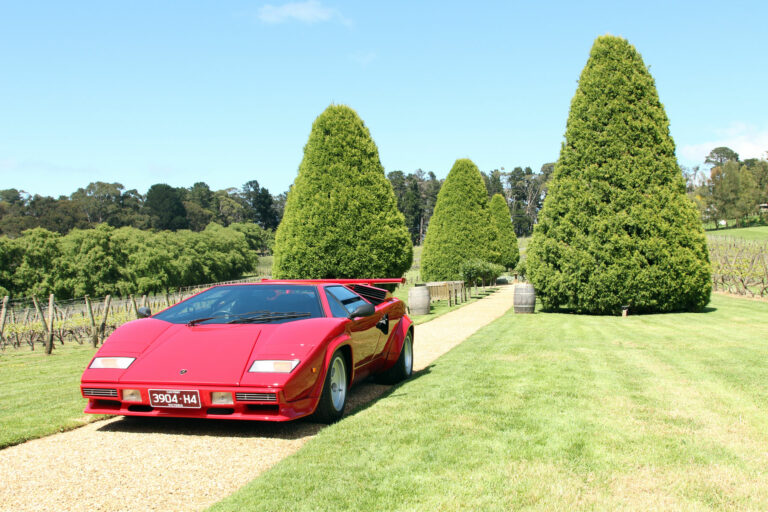
I really do like the first Countach, the LP400 and its curious and genius blend of straight lines and curves. Its surface detailing as well as its proportion are seductive but I like the 80’s, muscular, be-winged and blister-arched incarnation that it morphed into much less. Having said that, as I settled in behind the wheel and came to terms with the weight of its controls and surrendered to the fact that its brilliance was not something that came from its definition as a consumer good, but as a really excessive way to move forward very quickly I settled into the idea that to be rewarded by this car I was going to have to work for it. It is hot inside a Countach because it has a windscreen that basically faces the sky, and directly beneath it is a desk-sized dashboard – in ‘our’ car, it was thoughtfully upholstered in black leather just to make it a bit warmer. The ‘windows’; these are rectangular panes of glass, horizontally divided in two at the very height that you’d require to look left and right out of the car. The lower section conveniently winds down – about two inches. In total.
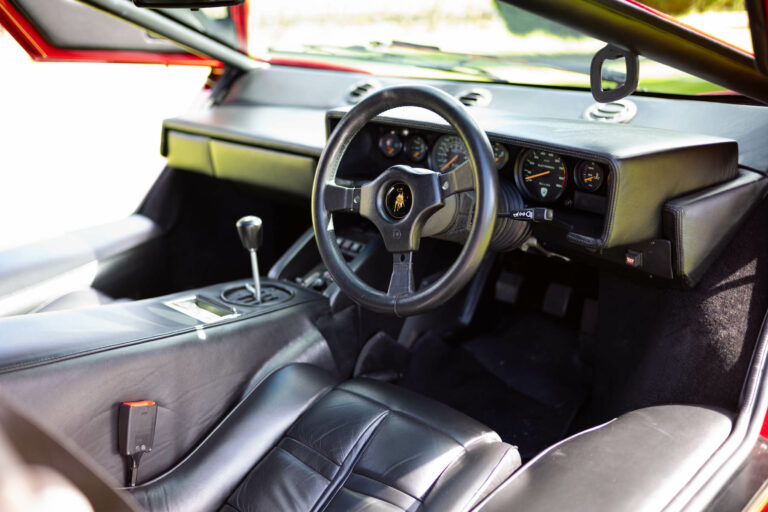
The seats are curved like a banana – base and back rest in one unit, but fear not – they pivot on their lower axis and as long as you bend like a banana yourself, you’ll be fine. I can assure you that I was, because the moment that I held the key over on the starter and heard the familiar whirr of Giotto Bizzarini’s magnificent edifice of an engine erupting into life I immediately forgot the sweltering ergonomic challenge that was the cockpit and concentrated on how good the throttle response is when one of these engines is fitted with downdraft carburettors. Downdraft carburettors and four-valve per cylinder heads I might add. That’s a juxtaposition of old and new if there ever was one; Carbies and four valve heads.
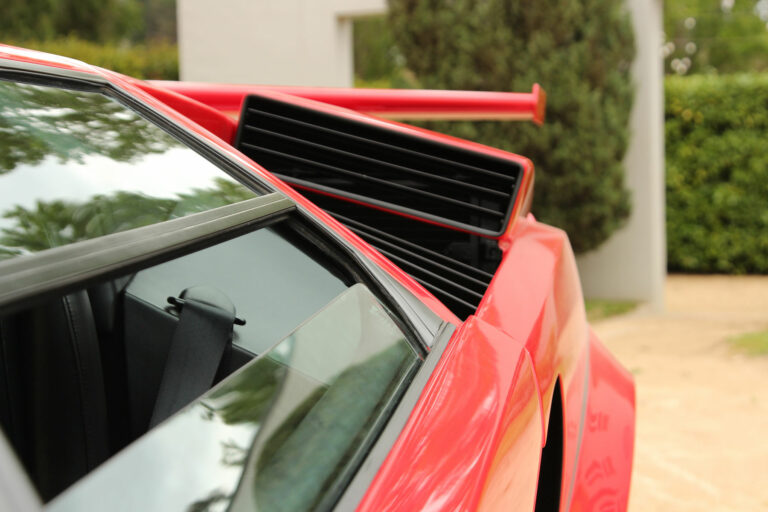
In this assembly of mechanical items (remember, this was no longer a Countach in my analytical brain, right?), we were underway. And I enjoyed it. A bit. I mean, the one true thought that resonates is ‘this car is strong’. Robustness in the mechanicals, harnessed by a light(ish) and stiff frame with the torque of the engine making its way back to the smallest wheels ever fitted with 345 section rubber, is obvious. Shifting down into first gear to give one’s self adequate revs to launch out of the apex of a hairpin when necessary can be fraught with anxiety in some cars – but not this one. In fact, it really did ask to be driven aggressively. Given a very remote and deserted piece of straight tarmac, the desire to see how fast it would go would be inevitable. Conceptually, when you drive someone else’s car you do it gently – but in this, the only way is to drive it like you’re being chased.
Criticising the Countach is futile. It has flaws, but they cease to matter in the greater scheme of things.
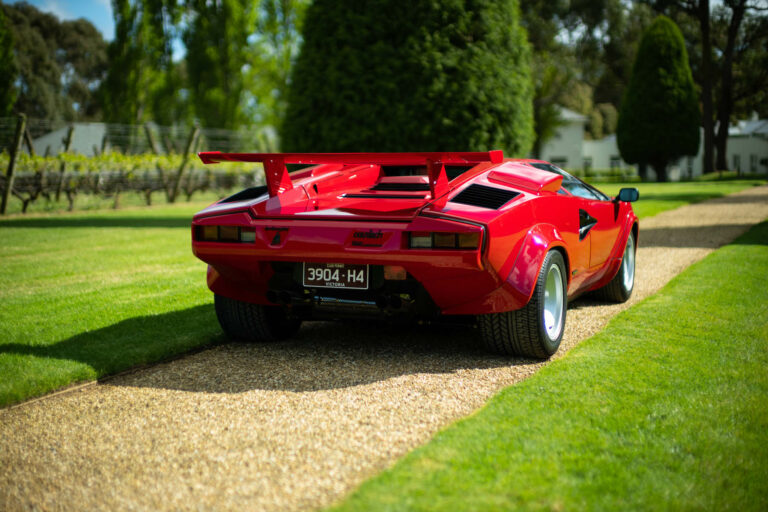
It defined a genre because it is totally bonkers and perhaps it might’ve been a more appropriate title for the genre, to be regarded as ‘bonkerscars’ but the truth is this; cars need not make sense. In fact, they don’t even need to have pedigree to the extent that their names are inextricably linked with the world’s great drivers and races. Not only that, but as a supercar neither does it need to have been sold in volumes of millions and justified its creators as geniuses.
A great car – or at least a great supercar need only excite you. And excite me, it did.
So, it turns out that Dave’s method is good. He doesn’t care overly for badges and what they mean or who created them – which isn’t to say that he doesn’t care for history, but I learned that I need to drive the car sometimes and not the legend.
